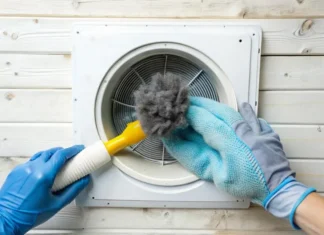Optimizing Property Value
Systems of order descend into chaos, this is a scientific law, it’s the second law of thermodynamics, which deals with entropy. In a nutshell, it doesn’t matter how well-engineered any building is. Eventually, it’s going to fall apart. That’s how entropy works. Such physical realities simultaneously apply to your home.
The most efficiently engineered property is going to fall apart without maintenance. Part of maintenance involves refurbishment, upgrade, and remodel; this is one of the best ways to keep a property at its best over the long run. Your kitchen counters, floors, and cabinets will only last ten to twenty years, realistically.
Now, you can “part” your home out as you would a car. That is to say: instead of remodeling a room at intervals, you just fix a lightbulb here, replace a washing machine there, redo the wallpaper over the weekend, or maybe spend a week doing some landscaping when it’s necessary.
There’s also the “all-out” approach; this is when you simply do everything you can as fast and qualitatively as you can. There are a lot of different remodeling angles to consider. Here, we’re going to look at the “millennial” angle as regards home improvement to help you determine which remodeling, refurbishing, or upgrade options best suit you.
1. The DIY Option
Going the DIY route can be something you lean into 100% or something you only touch on. Essentially, if you’re Doing It Yourself, the job will take longer and be a bit more complex. However, you’ll save money, and you can get the work done on your schedule. There’s an upper limit, though.
If you don’t at least have a savvy friend who understands electronics, wiring, and other technological aspects of energy enablement in your homework, you may need to hire an electrician. That said, it is possible to slowly perform repairs one thing at a time and learn as you go—though this can be dangerous.
With DIY work, you need to know your limitations and prioritize jobs you’re able to do. Many millennials are doing this kind of thing right now, and you may be surprised how many jobs you can do with little to no experience. For example, all you need to do to make a wooden floor look its best is sand, stain, and polyurethane.
Now that’s a weekend’s work, but it’s just a matter of buying the materials and putting in the time. Sure, you spend more on materials than you might have if you purely outsourced to contractors who use their tools, but materials tend to be much less expensive than the cost of service. In the end, you’ll get the job done cheaper, though it may take longer.
2. The Expensive Angle
Some millennials have the financial ability to simply outsource all home improvement work. If you’re going to sell soon, and you can increase property value beyond the cost of labor and materials, this is a good option even if you’re not that flush with cash.
However, the more DIY work you can do, the better. Either way, you can simply outsource to contractors and let them know precisely what you want, where, and why. If you’re savvy in negotiations, you can save a little and get the work done fast.
3. Following High-Class Trends
Check out some of these Dallas downtown apartments to get an idea about what’s trending in one of the hottest housing markets in the country among millennials right now.
Dallas is swimming in trendiness, and Texas’ perspective on the last two years makes it a desirable state for many. One millennial trend is simply copying that which is already trending in such municipalities.
4. The Fixer-Upper Angle: Millennials Facing Realty Reality
It turns out, 2020 and 2021 have been years with such turbulent circumstances, many millennials seeking to buy homes have purchased “affordable”, “fixer-upper” properties and set themselves to repair them. If this is the case, home improvement is more likely to be a long-term undertaking if you’ve got to pursue one project at a time.
For this trend, you may want to be strategic. Pick rooms to focus on, and give yourself a rough itinerary of refurbishment. This weekend do the floor in the kitchen, next weekend does the floor in the dining room—unless you’re painting. If you’re painting, tape everything off and paint, then do the floors after; you may be able to sand off some of the accidental paint spots.
If you’re going the fixer-upper route, as many millennials are, you want to figure out which home improvement tactics to start on, and which ones should be done last. Then you give yourself a schedule, price out materials, and prioritize based on what you can do yourself.
Ascertaining The Best Sort Of Improvements For Your Property
The fixer-upper is trending among millennial homeowners, as is following high-class trends.
You could go the expensive route if you’ve got the budget, or you could do what the majority of millennials are doing and lean into the DIY side of things; whatever works best. Regardless, you’ll need to improve your property one way or another; entropy is everywhere.












